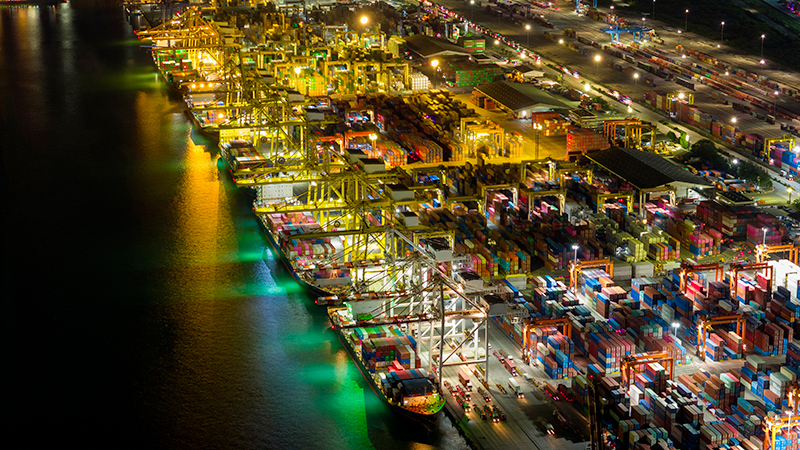
Rotterdam has proudly taken second place in the Top 10 of the Global Sustainable Cities Index. This hanks to – amongst others – its success in reusing residual heat and reducing carbon emissions, among others.
Port of Rotterdam is the port in the field of energy transition
The approach of the Port of Rotterdam Authority is focused on the efficiency of the current industry and the renewal of the energy and fuel systems. Much is being done to attract even more innovative developments, such as the production of green hydrogen, biofuels and recycling activities.
Additionally, an infrastructure for heat, hydrogen and carbon pipelines is being created. The Port of Rotterdam Authority is also making maritime shipping more sustainable with shore power projects and bunkering of clean fuels. Vessels with better environmental performance (than stipulated by law) are rewarded.
The aim: a carbon neutral port in 2050
Many projects are already well on their way. One of the Top 15 of energy and raw material transition projects in 2024 is shore power.
The container terminals of Hutchison Ports ECT Rotterdam (ECT) will be equipped with onshore power supply in the next few years. To this end, ECT has entered into an agreement with Rotterdam Shore Power (RSP), a partnership between energy company Eneco and the Port of Rotterdam Authority. Once the facilities at the terminals are fully operational, some 5,000 sea-going vessels can be connected to shore power annually, reducing carbon emissions in the port the port by around 35,000 tonnes a year. The current projects are among the largest shore power projects in Europe and comprise a combined quay length of around five kilometres.
Pilot movable shore power
In recent months, a pilot project featuring moveable shorepower battery containers was successfully conducted at the Steinweg Beatrix Terminal, connecting vessels of the CargoW shipping company. The Port of Rotterdam Authority coordinated this pilot. Together with the municipality of Rotterdam, it is now exploring options for wider applications of movable shore power for locations where flexible concepts are preferred to fixed connections.
Rotterdam onshore power supply under construction provides maximum flexibility
At the end of the fourth quarter of 2024, the onshore power supply (OPS) at Holland Amerikakade in Rotterdam will be ready for testing. “Offering the highest operational flexibility is key to this shore power rconnection,” explains Nick Hoogeweij, executive manager of Cruise Port Rotterdam (CPR). “We have the possibility of connecting vessels anywhere along the line of 235 metres, regardless whether a vessel needs to be connected on starboard or port. Since 90% of cruise vessels sailing in our waters can now be connected, the OPS prospects look promising.”

